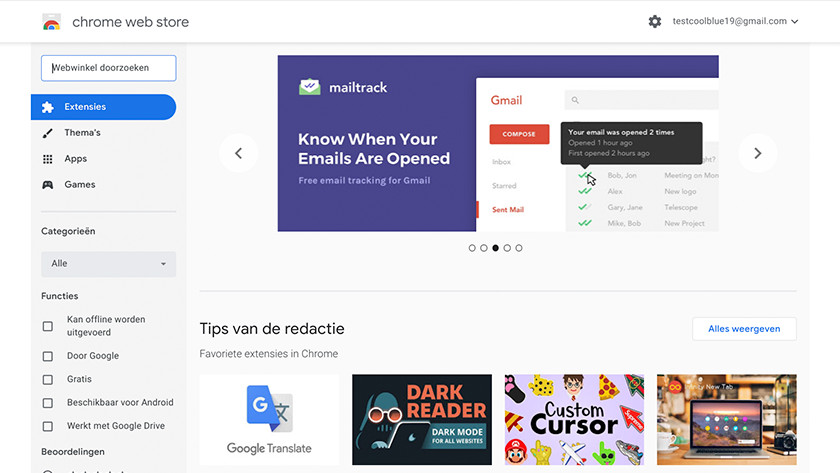Try out brand new Chrome Browser features in a pre-release build. Choose this option if you want to install the beta version of Chrome Browser to test its functionality and performance in your environment. Get the 64-bit and 32-bit beta bundles. Chrome beta MSI (64-bit) Chrome v. Chrome is a very popular web browser designed to be fast and lightweight. It was developed by Google in order to make surfing the web easier even as technology changes. Chrome has an incredibly minimalist interface with very few buttons or menus. This is intended to maximize the amount of screen space available for displaying websites.
Google Chrome has been at the center of a significant privacy controversy in recent weeks. Google wants to replace third-party cookies that advertisers employ to track users online and serve. Google Chrome remains the king of the web browsers, with a 66% market share as of September 2020. Microsoft’s newest Edge browser, which uses the Chromium open-source engine, is in fifth-place at.
Before writing more complex code, let’s talk about debugging.
Debugging is the process of finding and fixing errors within a script. All modern browsers and most other environments support debugging tools – a special UI in developer tools that makes debugging much easier. It also allows to trace the code step by step to see what exactly is going on.
We’ll be using Chrome here, because it has enough features, most other browsers have a similar process.

The “Sources” panel
Your Chrome version may look a little bit different, but it still should be obvious what’s there.
- Open the example page in Chrome.
- Turn on developer tools with F12 (Mac: Cmd+Opt+I).
- Select the
Sourcespanel.
Here’s what you should see if you are doing it for the first time:
The toggler button opens the tab with files.
Let’s click it and select hello.js in the tree view. Here’s what should show up:
The Sources panel has 3 parts:
- The File Navigator pane lists HTML, JavaScript, CSS and other files, including images that are attached to the page. Chrome extensions may appear here too.
- The Code Editor pane shows the source code.
- The JavaScript Debugging pane is for debugging, we’ll explore it soon.
Now you could click the same toggler again to hide the resources list and give the code some space.
Console
If we press Esc, then a console opens below. We can type commands there and press Enter to execute.
After a statement is executed, its result is shown below.
For example, here 1+2 results in 3, and hello('debugger') returns nothing, so the result is undefined:
Breakpoints
Let’s examine what’s going on within the code of the example page. In hello.js, click at line number 4. Yes, right on the 4 digit, not on the code.
Congratulations! You’ve set a breakpoint. Please also click on the number for line 8.
It should look like this (blue is where you should click):
A breakpoint is a point of code where the debugger will automatically pause the JavaScript execution.
While the code is paused, we can examine current variables, execute commands in the console etc. In other words, we can debug it.
We can always find a list of breakpoints in the right panel. That’s useful when we have many breakpoints in various files. It allows us to:
Chrome Web Store
- Quickly jump to the breakpoint in the code (by clicking on it in the right panel).
- Temporarily disable the breakpoint by unchecking it.
- Remove the breakpoint by right-clicking and selecting Remove.
- …And so on.

Right click on the line number allows to create a conditional breakpoint. It only triggers when the given expression is truthy.
That’s handy when we need to stop only for a certain variable value or for certain function parameters.
Debugger command
We can also pause the code by using the debugger command in it, like this:
That’s very convenient when we are in a code editor and don’t want to switch to the browser and look up the script in developer tools to set the breakpoint.
Pause and look around
In our example, hello() is called during the page load, so the easiest way to activate the debugger (after we’ve set the breakpoints) is to reload the page. So let’s press F5 (Windows, Linux) or Cmd+R (Mac).
As the breakpoint is set, the execution pauses at the 4th line:
Please open the informational dropdowns to the right (labeled with arrows). They allow you to examine the current code state:
Watch– shows current values for any expressions.You can click the plus
+and input an expression. The debugger will show its value at any moment, automatically recalculating it in the process of execution.Call Stack– shows the nested calls chain.At the current moment the debugger is inside
hello()call, called by a script inindex.html(no function there, so it’s called “anonymous”).If you click on a stack item (e.g. “anonymous”), the debugger jumps to the corresponding code, and all its variables can be examined as well.
Scope– current variables.Localshows local function variables. You can also see their values highlighted right over the source.Globalhas global variables (out of any functions).There’s also
thiskeyword there that we didn’t study yet, but we’ll do that soon.
Tracing the execution
Now it’s time to trace the script.

There are buttons for it at the top of the right panel. Let’s engage them.
Resumes the execution. If there are no additional breakpoints, then the execution just continues and the debugger loses control.
Here’s what we can see after a click on it:

The execution has resumed, reached another breakpoint inside say() and paused there. Take a look at the “Call Stack” at the right. It has increased by one more call. We’re inside say() now.
Run the next statement. If we click it now, alert will be shown.
Clicking this again and again will step through all script statements one by one.
Similar to the previous “Step” command, but behaves differently if the next statement is a function call. That is: not a built-in, like alert, but a function of our own.
The “Step” command goes into it and pauses the execution at its first line, while “Step over” executes the nested function call invisibly, skipping the function internals.
The execution is then paused immediately after that function.
That’s good if we’re not interested to see what happens inside the function call.
That’s similar to “Step”, but behaves differently in case of asynchronous function calls. If you’re only starting to learn JavaScript, then you can ignore the difference, as we don’t have asynchronous calls yet.
For the future, just note that “Step” command ignores async actions, such as setTimeout (scheduled function call), that execute later. The “Step into” goes into their code, waiting for them if necessary. See DevTools manual for more details.
Continue the execution and stop it at the very last line of the current function. That’s handy when we accidentally entered a nested call using , but it does not interest us, and we want to continue to its end as soon as possible.
That button does not move the execution. Just a mass on/off for breakpoints.
When enabled, and the developer tools is open, a script error automatically pauses the execution. Then we can analyze variables to see what went wrong. So if our script dies with an error, we can open debugger, enable this option and reload the page to see where it dies and what’s the context at that moment.
Right click on a line of code opens the context menu with a great option called “Continue to here”.
That’s handy when we want to move multiple steps forward to the line, but we’re too lazy to set a breakpoint.
Logging
To output something to console from our code, there’s console.log function.
For instance, this outputs values from 0 to 4 to console:
Regular users don’t see that output, it is in the console. To see it, either open the Console panel of developer tools or press Esc while in another panel: that opens the console at the bottom.

If we have enough logging in our code, then we can see what’s going on from the records, without the debugger.
Summary
As we can see, there are three main ways to pause a script:
- A breakpoint.
- The
debuggerstatements. - An error (if dev tools are open and the button is “on”).
When paused, we can debug – examine variables and trace the code to see where the execution goes wrong.
There are many more options in developer tools than covered here. The full manual is at https://developers.google.com/web/tools/chrome-devtools.
The information from this chapter is enough to begin debugging, but later, especially if you do a lot of browser stuff, please go there and look through more advanced capabilities of developer tools.
Chrome Web Store Wallpapers
Oh, and also you can click at various places of dev tools and just see what’s showing up. That’s probably the fastest route to learn dev tools. Don’t forget about the right click and context menus!
